The Intel Skull Canyon NUC6i7KYK mini-PC Review
by Ganesh T S on May 23, 2016 8:00 AM ESTGaming Benchmarks
Intel's Iris Pro Graphics SKUs with integrated EDRAM are amongst the highest-performing iGPUs in the market right now. The Core i7-6770HQ is equipped with Intel Iris Pro Graphics 580 - a GT4e part with 72 EUs and 128MB of eDRAM.
For the purpose of benchmarking, we chose six different games (Sleeping Dogs, Tomb Raider, Bioshock Infinite, The Talos Principle, GRID Autosport and DiRT Showdown) at various quality levels. The purpose of this section is not to benchmark the latest and greatest games, or benchmark at 4K resolutions. Intel clearly targets the Skull Canyon NUC towards casual gamers and those wanting to get introduced to mainstream gaming titles. As such, it is expected that people would play games with medium settings at 1080p or lower resolutions.
Sleeping Dogs
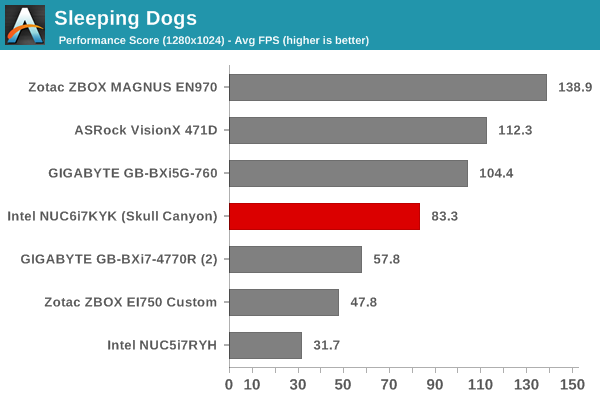
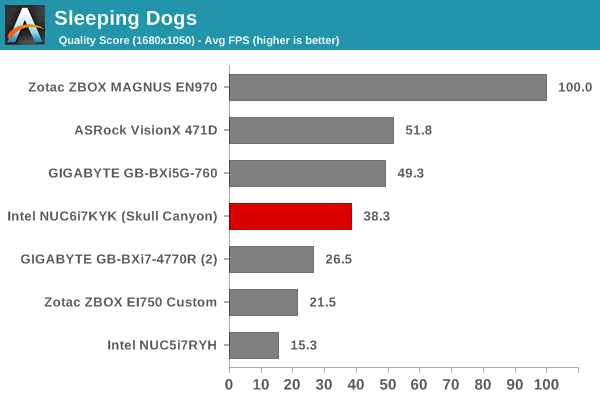
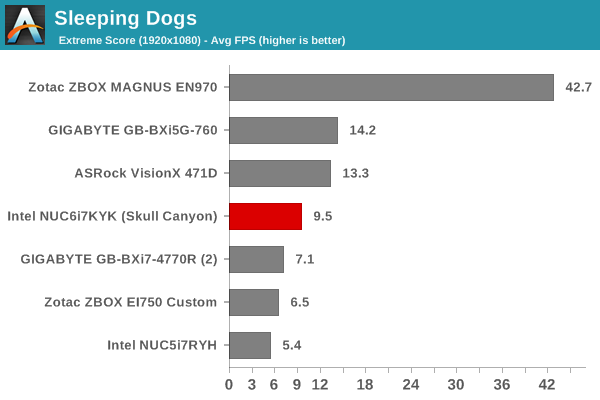
Tomb Raider

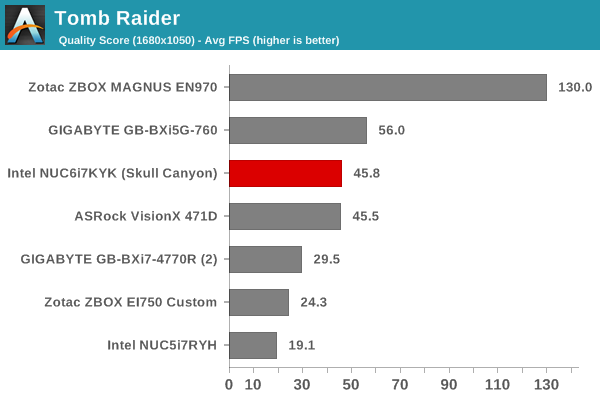
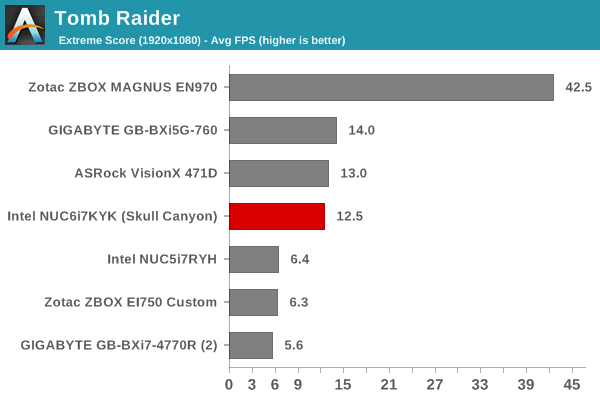
Bioshock Infinite
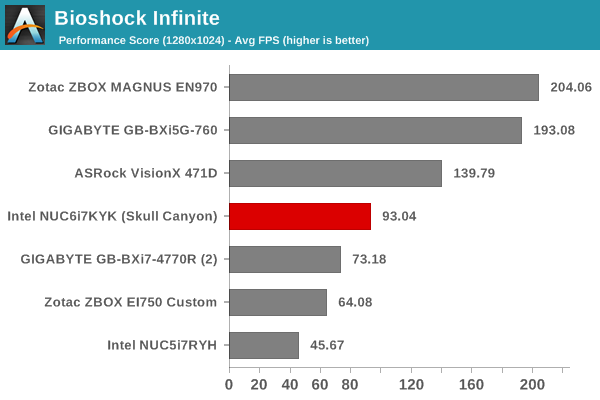
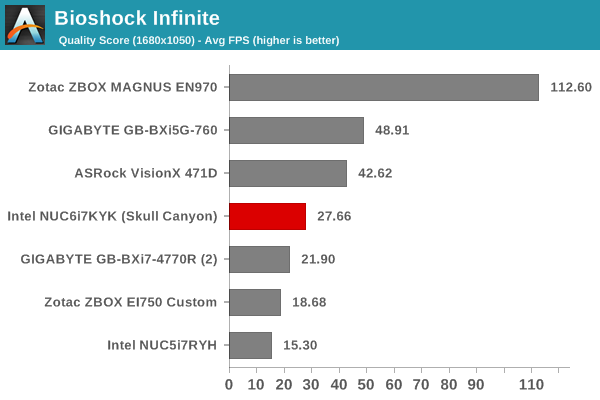

DiRT Showdown
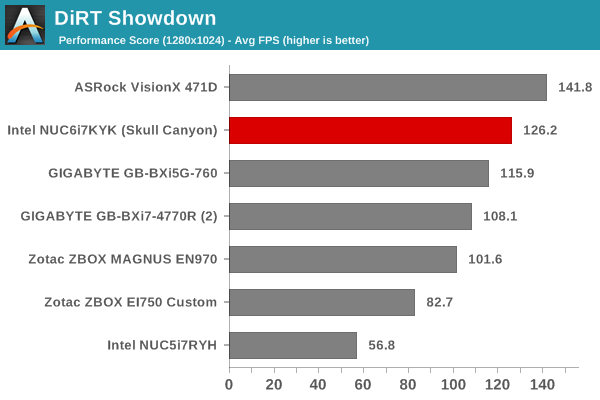
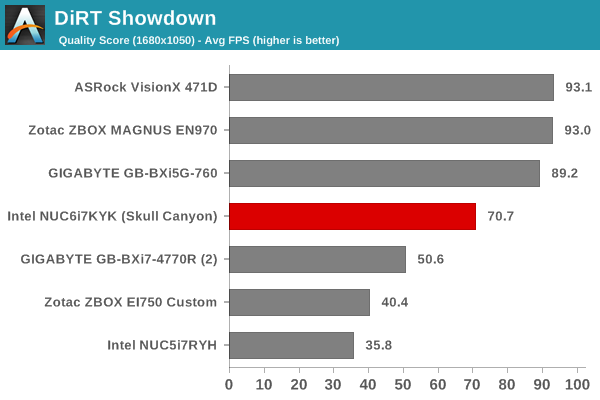
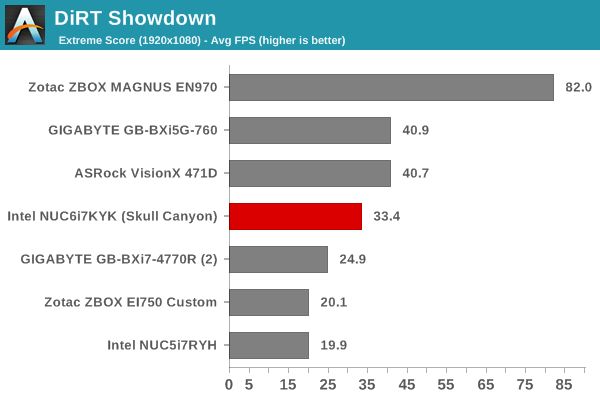
The Talos Principle
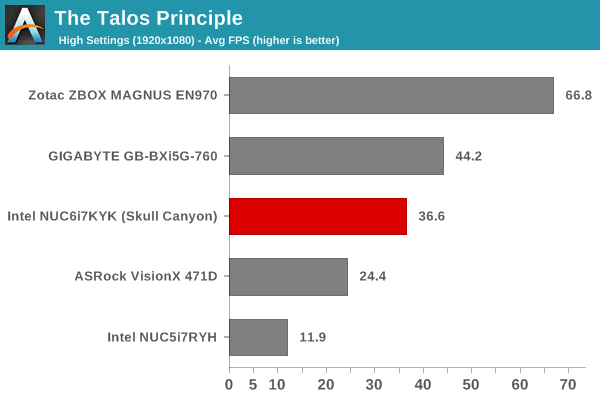
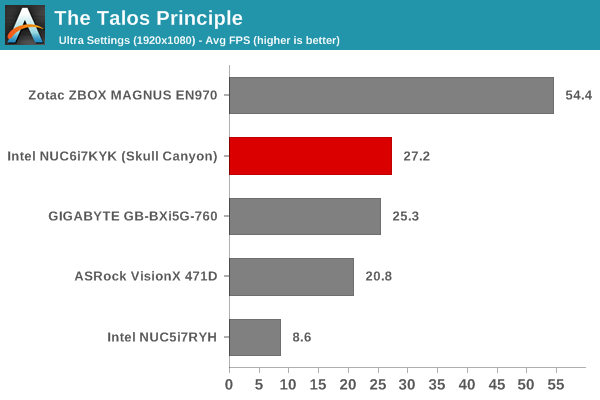
GRID Autosport
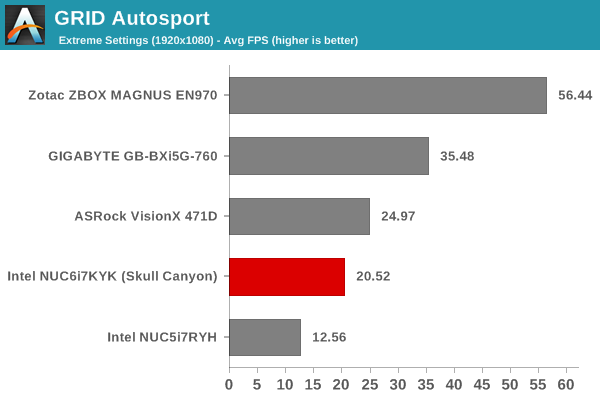
All the numbers point to expected results - Skull Canyon is simply the best when it comes to having the best iGPU for gaming purposes. However, it is a bit of a disappointment when compared to systems having slightly bigger footprints, but, equipped with previous generation discrete mobile GPUs. An external Thunderbolt GPU dock can solve some of the issues for users wanting more graphics prowess than what the Iris Pro Graphics 580 can deliver, but that has a significant price premium, and it is not something that we evaluated as part of this review.










133 Comments
View All Comments
fanofanand - Monday, May 23, 2016 - link
You rebutted your own statement. Casual gamers don't buy $1k mini-PC's. Testing this at super low resolutions can only serve one purpose, which is to provide the appearance of acceptable performance.ganeshts - Monday, May 23, 2016 - link
The point with mini-PC reviews with a gaming focus is that they are spread far apart - we may be lucky to have 3 or 4 in a year.So, it boils down to what we think is more relevant to the reader - a set of benchmark numbers that have to be presented standalone, or a set of benchmark numbers which can be compared apples to apples against some similar previous-generation systems (because, that is what we have the numbers for). We think the latter makes more sense, and that is the reason we are having these 'legacy resolutions' in the gaming benchmarks.
fanofanand - Monday, May 23, 2016 - link
I completely understand why you need to present the information, I just don't think this really meets the "Skulltrail brand" expectations. Skulltrail was always an enthusiast platform designed by enthusiasts. This product looks like it fell victim to marketing requiring a certain thickness of chassis. This product waters down the skulltrail branding, though I guess skulltrail really isn't even relevant anymore. I just don't understand who this is designed for I guess.FMinus - Sunday, August 7, 2016 - link
this really isn't a low budget part, they can get similar or better performance in an ATX form factor for around ~$100 to 200 less.zepi - Monday, May 23, 2016 - link
I'd love to see a ~90W TDP version of this with CPU cores getting about 30W and GPU having 60 or so allocated for it. Even 65W TDP part would be a definite improvement for gaming as CPU / GPU clocks could stay considerably higher during loading of both parts of the chip.With proper cooling it could actually compete decently with low-end discrete graphic laptops. Now it is clear that TDP is limiting it badly.
The question is: How is the perf/w compared to for example A9x GPU parts or Maxwells? Somehow I'm not terribly impressed by Intel's GPU's. Especially considering that they've had their hugely superior manufacturing technology which should help...
Osamede - Monday, May 23, 2016 - link
Power consumption measured with a 1080p display. Is this the real use case?ganeshts - Monday, May 23, 2016 - link
Why not? Not everyone has migrated to 4K yet. I am a first-world tech reviewer, and the max. res monitor that I have is only 2560x1440 :)jhoff80 - Monday, May 23, 2016 - link
Out of curiosity, will there also be an Anandtech review of the new Core M Compute Sticks as well?jaydee - Monday, May 23, 2016 - link
Isn't is kinda a no-brainer to make this thing a little big bigger (with a little better cooling), to avoid throttling? Wouldn't just an inch taller help immensely?ShieTar - Monday, May 23, 2016 - link
Sure, but at ~55mm height it is beginning to look similar in size to a 70 mm high Mini-ITX case, which you can use to build yourself a system with similar compute power, for less than half the system cost.So it really needs to be very flat and very compact to qualify as a niche-product. Asking twice the price for just a 20% difference in some aspect is usually very hard to sell.